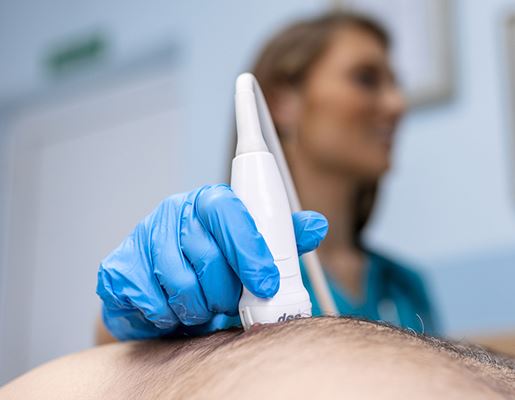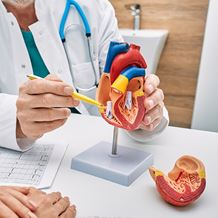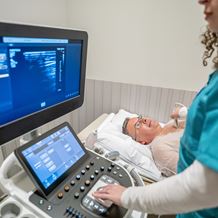What is myxoma?
Myxoma is a rare type of non-cancerous tumour that is typically found growing in the left upper chamber of the heart. They can vary in size and although not particularly dangerous in isolation, myxomas can cause severe problems if left untreated. The myxoma grows from the muscular wall of the heart and is connected by a type of stalk that allows it to swing around. This movement can potentially interfere with the function of the heart valve and blood flow. In some cases, small pieces of the myxoma can break off and travel through your body causing a dangerous blockage, and potentially a stroke. For these reasons, most myxomas are surgically removed to avoid the risk of future complications.
Symptoms and causes
Myxomas are very rare, and doctors are unsure as to the exact cause. They are typically more prevalent in women, and people aged over 40 with a small percentage passed on genetically. Symptoms can be extremely varied, with some patients experiencing no symptoms at all. Patients may typically experience:
- Difficulty breathing when lying flat
- Chest pain
- Shortness of breath with activity
- Coughing
- Dizziness
- Fainting
- Palpitations
- Fever
- Fatigue
- Flu-like illness
- Stroke-like symptoms
How is it diagnosed?
If you have been experiencing heart-related symptoms, your doctor will firstly perform a physical examination. Myxomas often cause extra or unusual sounds which can be picked up on a stethoscope. Your doctor may then recommend further testing which is likely to include an ECG (electrocardiogram), echocardiogram, and cardiac MRI or CT scan. These can detect the presence and location of the myxoma. Blood tests are also a useful way to reveal potential signs of a tumour, combined with imaging results and findings from a physical examination.
How is it treated?
Although myxomas are non-cancerous (benign), they can cause certain risks if left untreated. Some myxomas are less solid, with parts that can easily break off and travel through the blood stream to other parts of your body. Blood clots can also form around the tumour, with the potential to break away at any time. To avoid an increased risk of stroke, myxomas are typically surgically removed as soon as possible and this is generally performed through open heart surgery.

Other conditions
What's next?
If you have been experiencing heart-related symptoms, book an appointment with our cardiac services specialist today.
Our specialists in Cardiac Services
View all specialists





